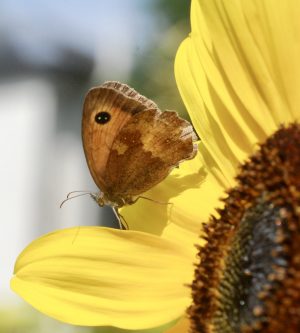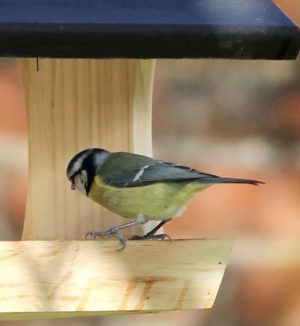Climate change – adapt or die ?

Summer 2018 saw my garden filled with colour, the sunflowers grew tall, the sweet peas colourful and scented and my ‘exotic’ red castor oil plants were almost tropical in appearance. However, this last summer was very disappointing - many things failed to thrive or were dwarfed - not doubt in response to periods of wet and cold in the earlier months of the year. Whilst, it is very clear that plants and animals respond to their environment and the weather that they experience, it is not clear how they respond to the long term effects of climate change. As yet, we do not have many answers to this. We need to understand how both plants and animals can
(1). respond or indeed adapt to changes in climate - i.e new conditions. For example, can they change in terms of size or shape or
(2). change the timing of ‘life events’ - e.g. metamorphosis such as the emergence of mayflies, when eggs are laid (much recorded by phenologists).
It is also important to determine if such changes affect their reproductive fitness; i.e. the number of offspring that they leave (their evolutionary fitness).
 To get answers to such questions involves long term and detailed studies of particular habitats and species. One such study is that which has been running (since 1947) at Wytham Wood, just outside Oxford. Wytham Wood is said to be the most intensely studied woodland in the world. The area includes ancient semi-natural woodland, secondary woodland, grassland and ponds. It is a designated SSSI, where some 500+ plant species and 800+ butterfly and moth species have been recorded.
To get answers to such questions involves long term and detailed studies of particular habitats and species. One such study is that which has been running (since 1947) at Wytham Wood, just outside Oxford. Wytham Wood is said to be the most intensely studied woodland in the world. The area includes ancient semi-natural woodland, secondary woodland, grassland and ponds. It is a designated SSSI, where some 500+ plant species and 800+ butterfly and moth species have been recorded.
Records of some of its bird populations go back some seventy or more years (starting with the work of David Lack). The populations of blue tits and great tits have been monitored - using hundreds of nest boxes, dozens of feeding stations and more recently by the micro-chipping of the birds. The time of reproduction, the number of eggs laid and the weight and size of the birds have been measured over the decades. All vital statistics to inform of any response to changing climatic conditions. Harvard University also has its own woodlands at Petersham (in Central Massachusetts) – and these too have been been subject to intensive study.
Viktoriia Radchuk (at the Leibniz Institute for Zoo and Wildlife Research in Berlin) together with many other researchers has brought together many studies similar to the Wytham one - involving different species, but mainly birds; and similar data sets. Analysis showed that higher temperatures (associated with climate change in recent times) were moving life events earlier in the year. Thus, birds are arriving at breeding sites earlier, breeding earlier, and the young are developing earlier. Seemingly, these changes in timing enable birds to breed more successfully. However, though the birds are responding to environmental changes it may be that they are not able to respond fast enough in the longer term. Many phenological events have moved forward in respond to climate change but not all. Columbian ground squirrels are reported to emerge from hibernation later, and the migration of some birds has been delayed. These changes are thought to lower the ‘fitness’ of the organisms.
At the moment, many animals (and indeed plants) seem able to adapt to changes in climate - without moving to new areas. However, in the longer term, whilst migration (extension of the range of a species) might be a possibility - this could be problematic with the increasing fragmentation and destruction of habitats (though farming, urbanisation, construction of roadways etc). Whilst organisms are adaptable in so many ways, their amazing flexibility may not be enough to keep pace with the rapid onset of climate change that we have witnessed in recent years.
Thanks to Sharon for Great Tit image
Comments are closed for this post.
